Now essential, Python is THE language to learn. Why should we be interested in it? What are its advantages over other languages? What are its applications? What training should I follow?
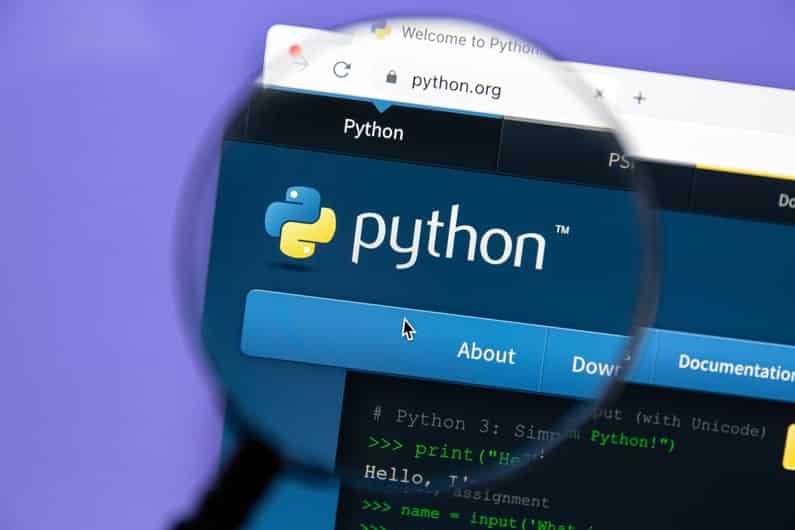
If there's one computer language to learn right now, it's Python. After dethroning C, C++ and Java, it dominates the international rankings TIOBE Index and PYPL since 2021.
More than 20 % developers use Python, or 11.3 million people worldwide, according to a Slashdata study carried out in 2023.
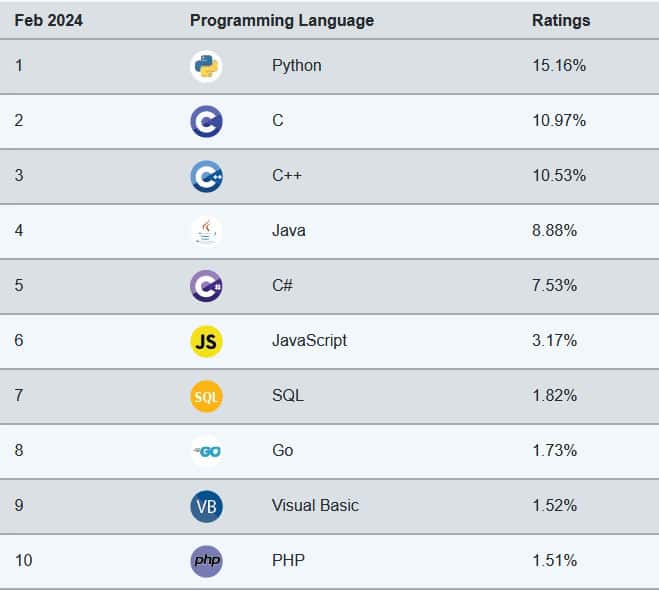

But why is it so popular?
Python seduces above all with its simplicity. But behind this simplicity lies tremendous versatility.
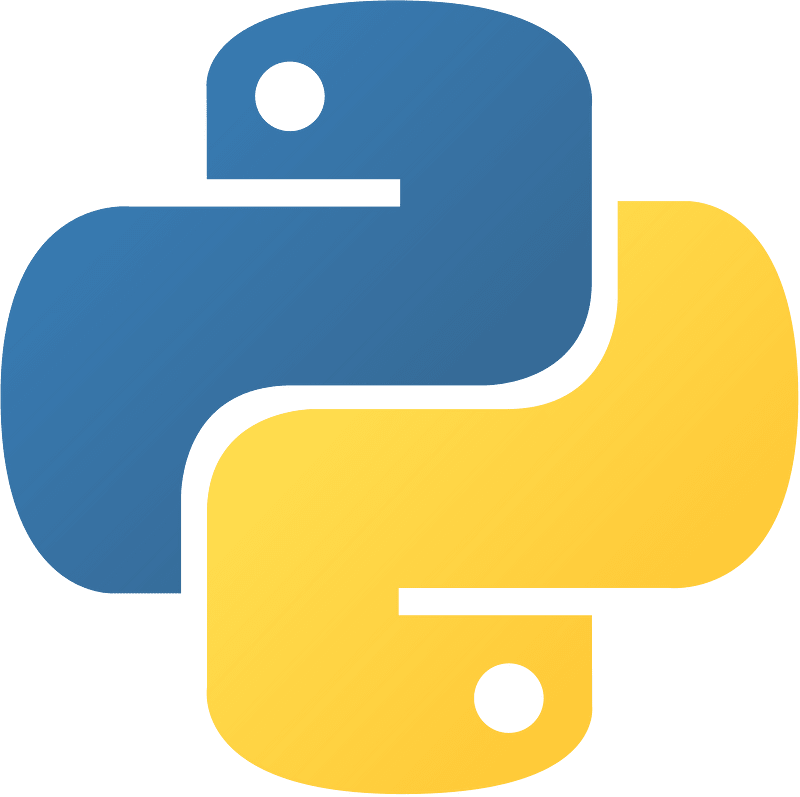
Invented in 1991 by Dutchman Guido van Rossum as a tribute to British comedians Monty Python, Python is used in a wide variety of fields and applications. It is found in artificial intelligence, web development, big data or system administration.
Let's take a closer look at ten reasons why you should adopt it.
10 reasons to learn Python
1. Python is easy to learn
No need to spend days learning it like other more difficult languages like C and Perl. Designed to be readable, Python shines through simplicity and precision of its syntax.
Code blocks are identified by indentation (positional syntax), instead of curly braces as in C, C++ or Java. An increase in indentation marks the start of a block, and a reduction in indentation marks the end of the current block.
Blocks can be nested.
Code examples to calculate the sum of 2 numbers
- With Python
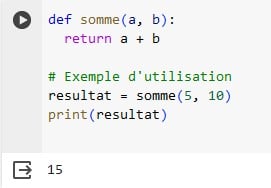
- With C++
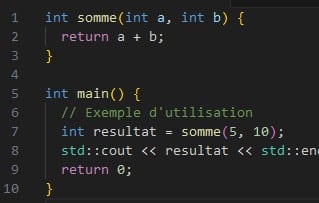
Python is therefore perfectly suited to beginners in programming. This is largely why it replaced the Pascal language in schools and why algorithms are taught with Python from second grade.
Python is a high-level language, therefore close to natural language and independent of the machine on which it runs. It is also a object-oriented language which therefore handles object-oriented programming in addition to other paradigms.
2. It is effective language
This refined syntax makes it a very efficient language. A Python program has 3 to 5 times fewer lines of code than its equivalent in Java. It also requires approximately 5 times less development time.
Example of calculating the factorial of a number
- In Python: 5 lines of code

- In Java, 15 lines of code
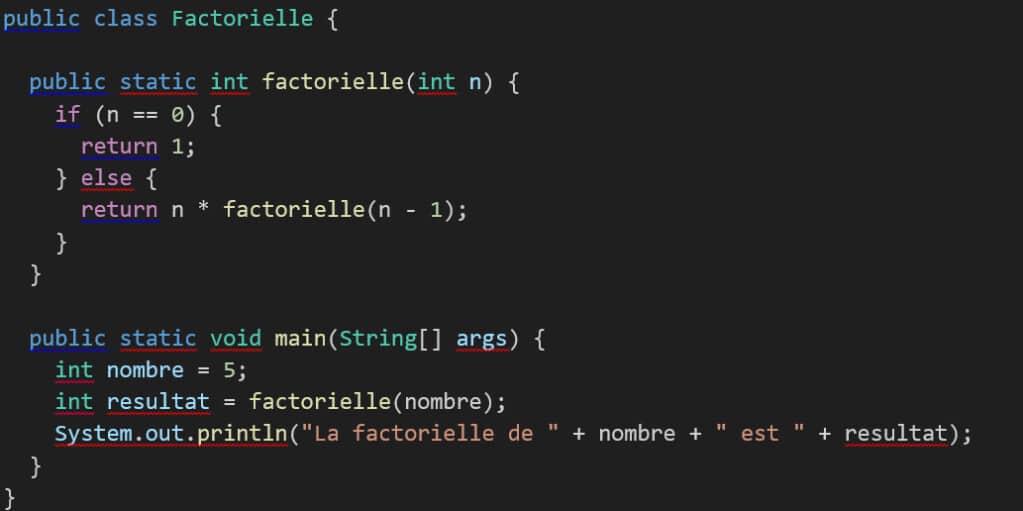
3. It is versatile
Python is used by many professions, in a wide variety of applications and sectors of activity.
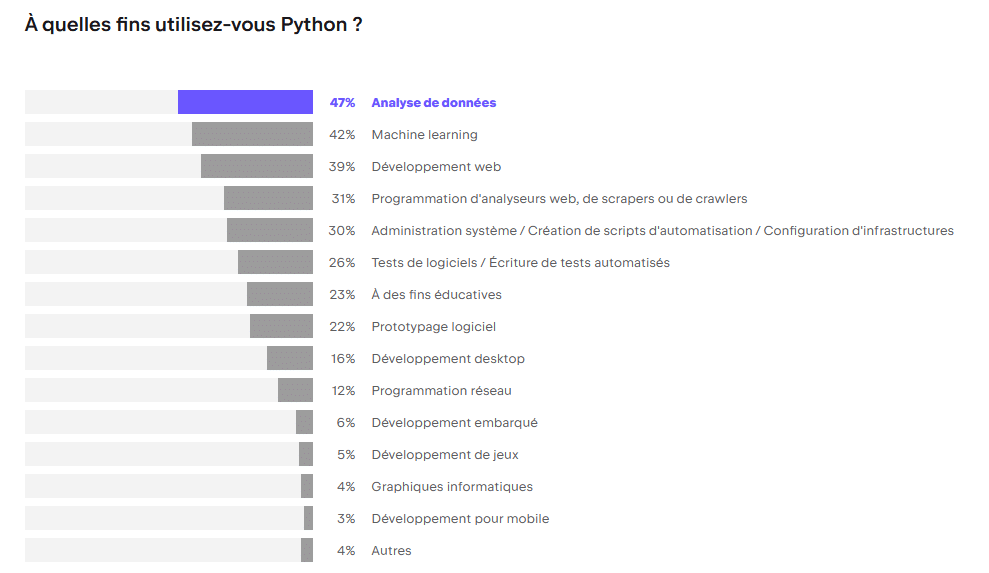
- Web development
- Back end web developer : Create server-side web applications, such as APIs and web frameworks.
- Full-stack web developer : Create complete web applications, both server-side and client-side.
- DevOps Engineer : automate infrastructure and deployment tasks.
- Data science and data analysis
- Data scientist : analyze data, create machine learning models and visualize results.
- Data Analyst : collect, clean and analyze data.
- Artificial intelligence
- Artificial intelligence engineer : develop intelligent systems, such as chatbots and conversational agents.
- Engineer in machine learning : develop and deploy machine learning models.
- Engineer in deep learning : developing deep neural networks for tasks in computer vision, natural language processing, and other areas.
- Other areas
- Software development : create desktop software, mobile applications and games.
- System administration: create scripts and automate system administration tasks.
- Finance : develop trading and financial analysis software.
- Science: scientific research in fields such as physics, biology and chemistry.
4. An open source language
Distributed under an open license, Python is completely free. Its code is accessible and can be modified freely. It is possible to use Python and its modules as part of a commercial application without having to pay a royalty, which helps reduce costs associated with software development.
5. An interpreted language
The code is executed line by line by another program called an interpreter. Interpreted languages are more flexible and unlike compiled languages which transform source code into machine code.

It is therefore easy to test a small piece of code.
To start the interpreter, simply type: $ python 3
On the other hand, Python is relatively slow compared to other languages, notably the 3 Cs: C, C++ and C#. To improve performance, it is possible to use one of the many JIT compilers that compiles the code at run time. Python version 3.13 comes with such a compiler.
6. Multi-platform and multi-architecture
As it is an interpreted language, Python is portable : it can run on any computer, regardless of the operating system (Windows, macOS, Linux, Android, iOS, etc.) and processor architecture (Intel, Qualcomm Snapdragon, Raspberry Pi, etc.), which allows you to develop cross-platform applications.
It is found on large Unix servers as well as on nanocomputers or smartphones.
7. Many libraries and frameworks
Python comes with a standard library that allows you to perform all common operations. Library (library in English) is a collection of functions related to a specific theme. It is the wealth of its specialized libraries that extend the possibilities of the language and accelerate development work.
Let's quote Numpy for scientific and statistical calculations, pandas to manipulate and analyze data tables, Matplotlib to display tables and graphs, BeautifulSoup to extract data from the web (web scraping).
PyTorch, TensorFlow, scikit learn to develop machine learning and deep learning models,
In addition to libraries, frameworks facilitate work in specialized areas such as Django for server-side development.
8. A large community
Python has an active and dynamic community of developers who contribute to its development, technical support and the creation of numerous modules and libraries. Python libraries are cataloged and accessible for free in the official Pypi repository which lists more than 517,000 projects!
9. Python makes creating variables easy
You don't need to declare the type of variables in advance. Its type is automatically determined by the value assigned to it (dynamic typing).
The syntax for creating variables is simple: simply assign a value to the variable with the equal sign (=).
Additionally, you can assign multiple values to multiple variables in a single line of code.
Changing the type is very easy since it can be done during program execution. In the example below, the value of x changes from an integer to a string.
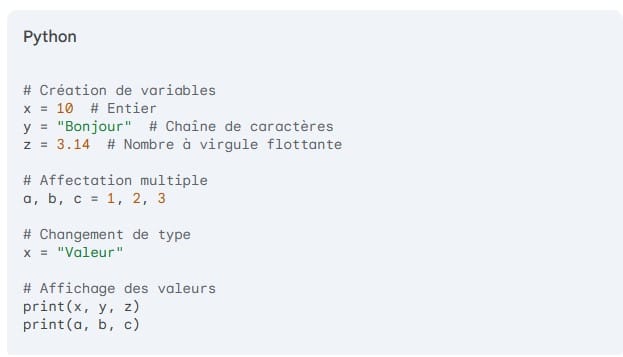

10. Used by many companies
Large companies and organizations report using Python: Google, Amazon, NASA, Facebook, Netflix, YouTube, Dropbox… and, in France, by Airbus, Leboncoin, Blablacar, banks, etc.
The choice of Python by these big names perfectly illustrates the language's ability to respond to high availability and efficiency issues, in a wide variety of sectors. And, incidentally, this allows us to be reassured about the sustainability of the language.
Why learn Python?
As you will have understood, learning Python is particularly attractive, whether you are a beginner or an experienced developer. In addition, training in Python brings a decisive advantage on the job market, as mastery of this language is increasingly demanded by recruiters.
Many job offers and rising salaries
Boosted by the rise of big data and AI projects, the number of job offers requiring Python skills has continued to grow in recent years. According to the specialized site Developpez.com, Python has even become the second most cited language in job offers for developers and other IT professionals.
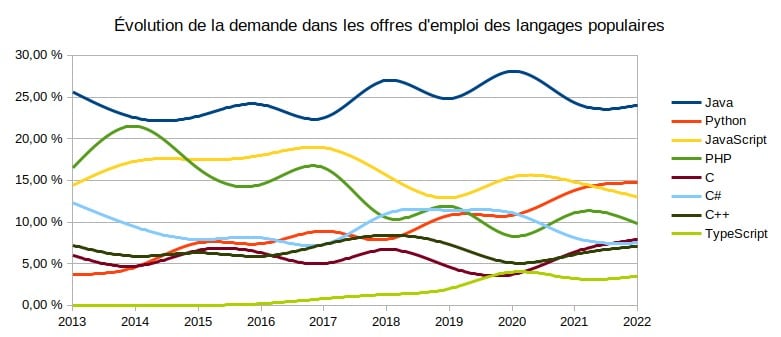
Additionally, the Average salary of a Python developer is around €51,742 gross according to Indeed in 2024, making it one of the best salaries for a developer, all languages combined.
Prefer training over self-learning
While Python is easy to learn, we don't recommend learning it on your own. Python training in a group, face-to-face or remotely, such as those offered by ORSYS will be preferable for:
- Accelerate your learning : you will learn faster in a group course than alone, self-taught. You benefit from a structured educational program and personalized monitoring. And the trainer will provide you with quality resources and tools that he has selected to extend the training.
- Being able to ask your questions to a trainer who is a seasoned professional and expert in his field.
- Learn good language practices in order to write clean, efficient and maintainable code.
- Discover the most suitable Python tools and libraries for your future uses and know how to use them effectively.
- Exchange with other participants from other companies and other sectors of activity to share your knowledge and experiences.
- Get certified : certain training courses allow you to obtain a certification. Enough to help you stand out on the job market and demonstrate your skills to employers.





